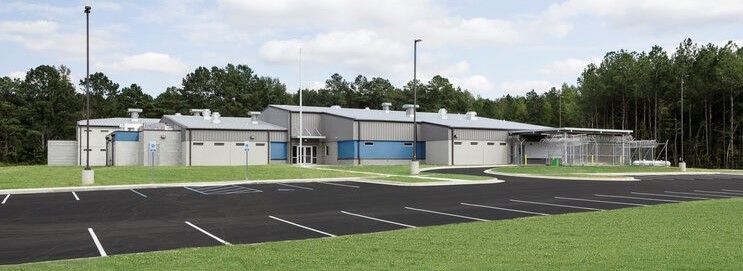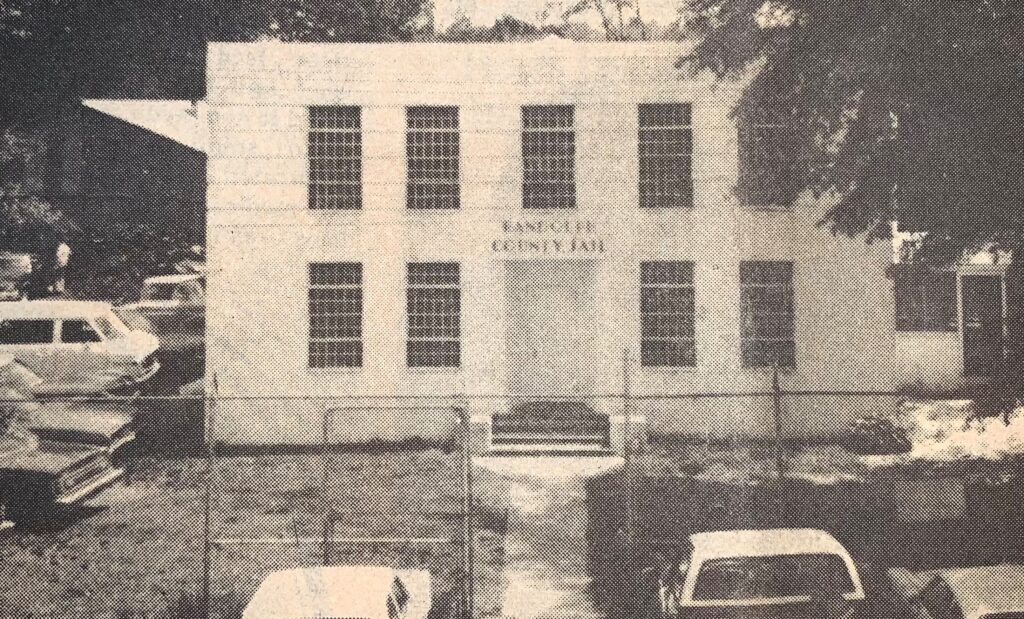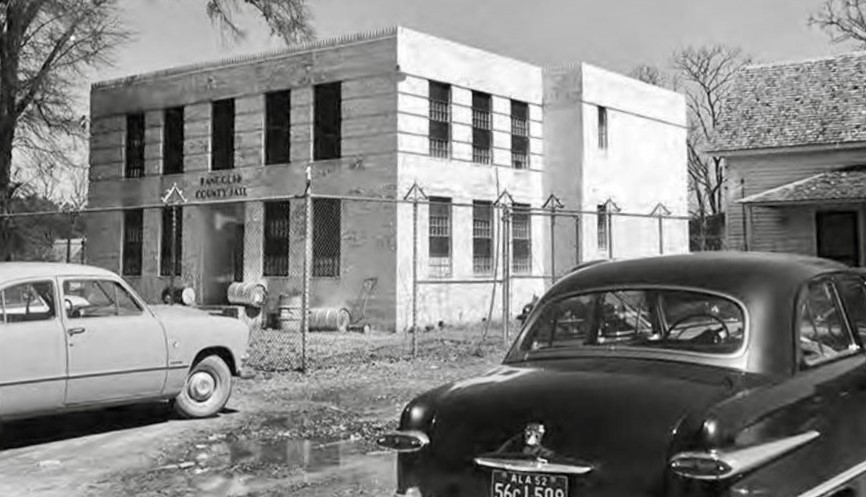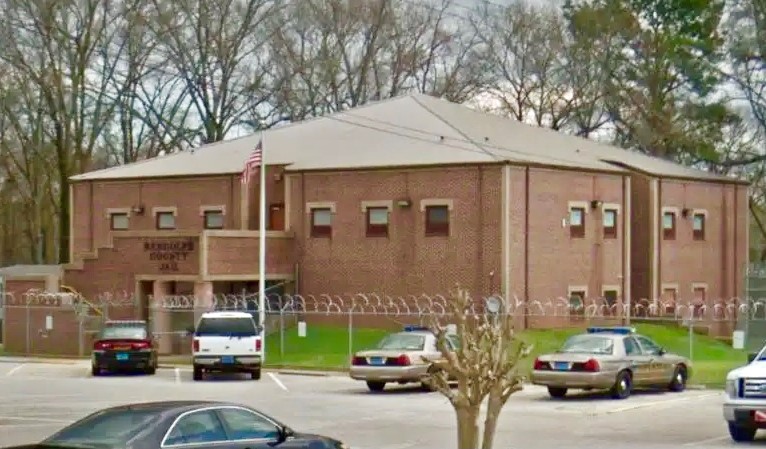
Randolph County Jail has a capacity of 110 inmates, and it’s is designed so that the capacity could be expanded to 156 without any major construction.
The 27,181 gross-square-foot jail itself is operated by a central control system that uses cameras all over the facility. It houses males and females, both minimum and maximum security.
Randolph County Jail is located on Probilt Drive in Wedowee and was opened for prisoners in February 2021. It was designed by JMR+H Architecture of Montgomery at a cost of approximately $11.7 million. Their plans included a 25+ year outlook for projected inmate beds, staffing analysis and operational budget.
According to a history compiled by Wedowee students in 1927 and published in The Roanoke Leader, “It is said that when Randolph’s first sheriff, William Hightower, made his first arrest — finding himself without a jail in which to lodge his prisoner — he took the body from his wagon, turned it upside down, raised one corner and ordered the prisoner to crawl underneath; then, throwing a quilt across the overturned body, he made his bed for the night, guarding his prisoner while he slept.”
If what these students heard from their elders was true, the next “jail” wasn’t much better for the unfortunate prisoners. According to their report, “A pit was dug, walled with stone and used for many years as Randolph’s jail. This pit was about 50 yards north of the present [1927] jail and was located in what is now Mrs. [Herna] Patrick’s garden spot. In plowing and spading this garden each spring, large stones, supposedly from walls of the former pit, are unearthed.”
Then in the fall of 1837, a contract was let to build a new jail and courthouse. The first jail building was completed and accepted by the county commission in December 1839.
Next Mr. McCann of Talladega was the contractor selected to build a brick jail in 1857. It and the courthouse were the only two brick buildings in Wedowee for several decades.
According to The Randolph Toiler newspaper, published in Wedowee, “After many vexatious delays caused by railroads failing to forward freight, Mr. F.M. Dobson of Jasper Construction Co. finished up the work of ‘making a new county jail out of the old one’ and turned it over to the county commissioners in January 1896 … The jail may be said to be new, except the walls, which being of hard brick and put up in a workman-like manner, could not have been improved upon. The cells, four in number, are of chrome steel, five-ply, and are considered as safe as cells can be made. Heaters, sewerage, water tank and a well and pump to furnish water, go to make the entire arrangement of the prison modern and up to date. The work will cost the county $4,345.”
In their 1904 and 1905 reports, grand juries in Randolph County made the following observations about the jail: running water to the tank near the jail for an abundance of water is needed there; piping should be laid from the spring on the mountain to the jail with pure running water at all times; and the jail should be furnished with fresh water by laying galvanized piping from the spring on the hill on the Dobson place.
At last in 1906, running water from the Dobson spring into the jail was installed. According the The Roanoke Leader, “The old walls [constructed in 1857] will be used, but the entire inside will be remodeled and be of steel with concrete floors. The building, in addition to being furnished with water, will be supplied with proper ventilation, sanitary equipment, such as bathtubs, [water] closets with automatic flush and close, etc., which will be in keeping with the progress and wealth of the county and the demands of our Christian and humane civilization.” The cost was estimated at $8,000.
In 1935 and 1936 during the Great Depression, the grand juries of the county began to call for a brand-new jail because the size had become inadequate for the number of prisoners.
A new jail constructed in 1937 had four big cells upstairs and three smaller ones downstairs.

At the same time, an extensive addition to the courthouse was completed, including a fireproof vault for records. This was fortunate because just three years later, the courthouse would burn, and its white mid-century modern replacement would greatly resemble the jail recently built out back.
Randolph County Jail 1937-1985
After citations by the state fire marshal starting in 1977, this jail was closed by the fire marshal in June 1980.
Prisoners were housed in Chambers County for a time. In November 1981, the first floor of the jail was brought up to code and reopened to house only six prisoners (with overflow still housed in Chambers County) while efforts were underway to replace the building.

(Notice the house on the right, which was used at times by the sheriff or a jailer.)
In November 1983, Randolph County voters approved a half-cent sales tax and a diversion of existing property taxes to fund the building of a new $1.1 million, 31-cell jail, which opened in 1985.

In 1994 with already overcrowded conditions and lack of sufficient staffing, prisoners started a riot over their Christmas meals. They ripped out wiring, broke light fixtures and destroyed telephone equipment, resulting in $12,800 worth of damages. At that time, the facility housed 59 prisoners – 23 of whom were state prisoners awaiting transfer. Five years later, a second riot began when there were 92 inmates incarcerated. At that time, 21 of those were state inmates awaiting transfer.
In addition to constant overcrowding – as many as 110 prisoners – and lack of staff, the building itself was an issue because it was in near constant need of expensive repairs, especially to its obsolete plumbing, which was creating problems with mold.
A half-cent sales tax was approved by voters in November 2016 to build and operate the current jail.
(Sources: Newspapers The Roanoke Leader, The Randolph Toiler, The Randolph Star and The Anniston Star and J.M.K. Guinn’s History of Randolph County)
